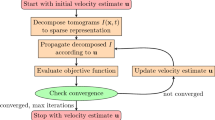Abstract
This research explores a novel technique, using Genetic Algorithm Particle Pairing (GAPP) to extract three-dimensional (3D) velocity fields of complex flows. It is motivated by Holographic Particle Image Velocimetry (HPIV), in which intrinsic speckle noise hinders the achievement of high particle density required for conventional correlation methods in extracting 3D velocity fields, especially in regions with large velocity gradients. The GA particle pairing method maps particles recorded at the first exposure to those at the second exposure in a 3D space, providing one velocity vector for each particle pair instead of seeking statistical averaging. Hence, particle pairing can work with sparse seeding and complex 3D velocity fields. When dealing with a large number of particles from two instants, however, the accuracy of pairing results and processing speed become major concerns. Using GA’s capability to search a large solution space parallelly, our algorithm can efficiently find the best mapping scenarios among a large number of possible particle pairing schemes. During GA iterations, different pairing schemes or solutions are evaluated based on fluid dynamics. Two types of evaluation functions are proposed, tested, and embedded into the GA procedures. Hence, our Genetic Algorithm Particle Pairing (GAPP) technique is characterized by robustness in velocity calculation, high spatial resolution, good parallelism in handling large data sets, and high processing speed on parallel architectures. It has been successfully tested on a simple HPIV measurement of a real trapped vortex flow as well as a series of numerical experiments. In this paper, we introduce the principle of GAPP, analyze its performance under different parameters, and evaluate its processing speed on different computer architectures.
Similar content being viewed by others
Author information
Authors and Affiliations
Additional information
Received: 7 September 1997/Accepted: 3 February 1998
Rights and permissions
About this article
Cite this article
Sheng, J., Meng, H. A genetic algorithm particle pairing technique for 3D velocity field extraction in holographic particle image velocimetry. Experiments in Fluids 25, 461–473 (1998). https://doi.org/10.1007/s003480050252
Issue Date:
DOI: https://doi.org/10.1007/s003480050252




